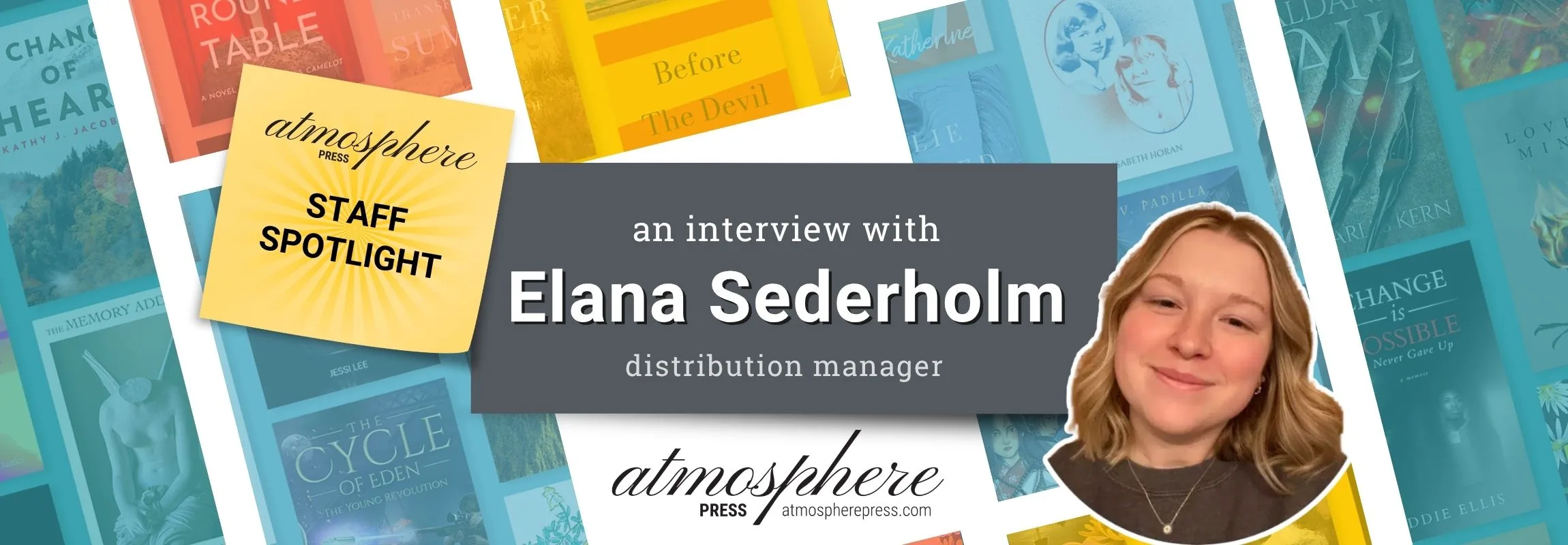In this guide, you’ll learn how nonlinear storytelling can enhance your plot, step-by-step strategies for planning and organizing non-chronological narratives, common mistakes to avoid, and practical tips for keeping your story clear, engaging, and emotionally impactful—so your readers stay invested from the first page to the last!
Advice
for Writers
Advice
for Writers
Atmosphere Press Staff Spotlight: Elana Sederholm
We like to take the publication process one step at a time. There are a lot of moving parts behind the scenes of your book's creation, and the team tries to avoid confusion or miscommunication when we can. We know you're eager to reach the finish line, but we want to ensure that every step is completed before you get there. All of us at Atmosphere Press want you to be proud of our work!
What Is Writer’s Block and Why Does It Happen?
Writer's block, that dreaded creative roadblock, is an all-too-familiar challenge for authors. It can strike at any stage of the writing process, leaving us feeling frustrated and stuck. But fear not! By embracing a combination of mindset shifts, creative exercises, and practical techniques, you can break free from the chains of writer's block and unleash your creative potential.
How to Write a Bestselling Romantasy Novel
Whether you're drafting your first romantasy or refining a manuscript already brimming with yearning and enchantments, you’ll find practical guidance here to help you blend heat, heart, and high-fantasy energy into one irresistible spell.
In the ever-evolving landscape of modern publishing, writers have an unprecedented opportunity to connect with readers, fellow authors, and literary enthusiasts through the power of social media. Gone are the days when authors could retreat into solitude, crafting their masterpieces in obscurity. Today, building a devoted audience is as much about mastering the art of social media as it is about crafting the perfect sentence.
The Art of Audiobook Production: A Complete Guide
In the rapidly evolving landscape of storytelling, audiobooks have emerged as a captivating medium that seamlessly blends literature and audio entertainment. With the surge in popularity of audiobooks, the art of audiobook production has become an essential aspect of the publishing industry. This article explores the intricacies of audiobook production and its crucial role in delivering immersive literary experiences to an ever-expanding audience.
What a Great Book Editor Really Looks Like
Finding the right book editor can make all the difference in your publishing journey. The editing stage isn’t just about fixing grammar or rearranging chapters — it’s about discovering deeper layers in your story, strengthening your characters, and growing as a writer.
Writing an Afterword: Tips, Examples, and Best Practices
In this guide, we’ll explore what an afterword is, why it’s important, and how to craft one that resonates! You’ll find practical tips, step-by-step guidance, and examples that help you create an afterword that complements your book’s content and leaves readers with a meaningful takeaway.
Writing an Introduction: How to Engage Readers and Set the Stage
In this guide, we’ll break down the purpose of a book introduction, provide a step-by-step approach for crafting one that resonates, highlight common pitfalls to avoid, and share practical tips to ensure your introduction engages and informs your audience! By the end, you’ll have the tools to create an introduction that not only introduces your book but also strengthens your connection with readers from the start.
Writing a Preface: How to Connect with Readers from Page One
In this guide, we’ll explore what a preface is, how it differs from other front-matter sections, and the best practices for writing one. You’ll also find tips, examples, and a step-by-step approach to crafting a preface that resonates with readers from page one. By the end, you’ll have the tools to create a preface that not only introduces your book but also strengthens your connection with your audience.










